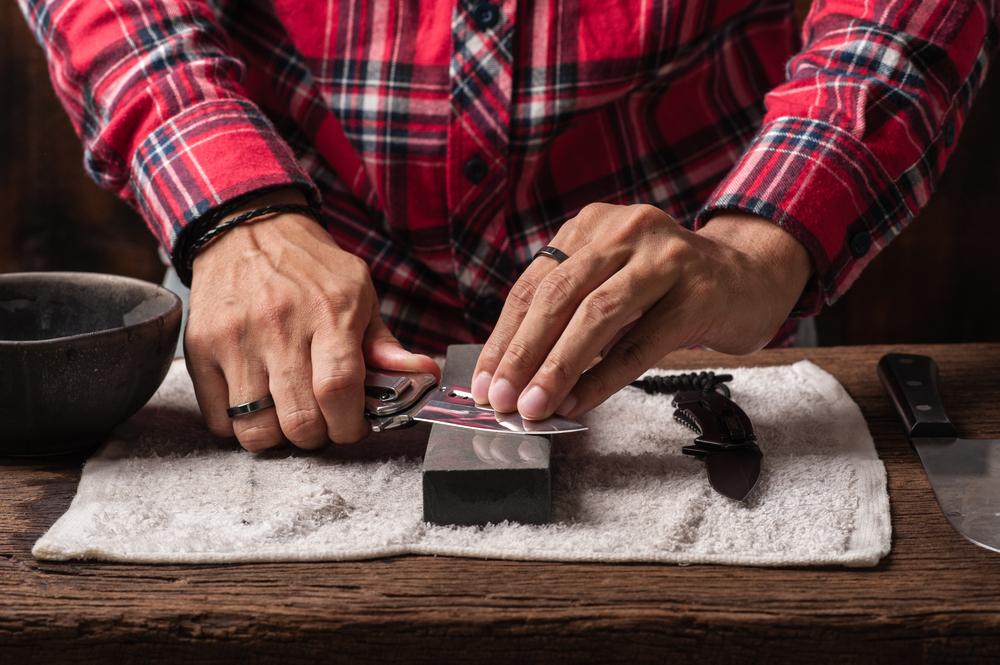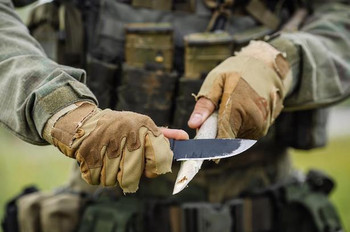3 Ways to Keep Your Military Survival Knife as Good as New
Nov 16th 2021

In emergency and survival situations, your military survival knife is your most important asset.
After all, a survivalist is really only as good as his weapon. Your military survival knife is your best bet for being able to construct a shelter adequately, gather food and hunt, create other tools and, most importantly, defend yourself from possible attackers in survival situations.
Having a knife in your survival pack is also much more low-maintenance than other typical survival “must-haves” today. Even the most high-end tactical knife will never need batteries, a plug-in or a GPS signal.
In fact, all your knife needs to function as the most critical part of your survival gear is a little TLC from you. Even regular, non-survival use can cause a blade to go dull over time. The acid found in fruits and vegetables, high temperatures and normal cutting will diminish the sharpness of most blades and leave you with a knife that simply does not function to its full capacity.
1. Invest in maintenance tools.
If you expect your best tactical knife to run like a well-oiled machine, then you are the one that’s going to have to do the oiling.
Buying the proper sharpening tools for your knife are some of the most important steps you can take in increasing your knife’s longevity. This includes:
- Whetstone
The most popular sharpening tools among knife owners, whetstones come in a large variety, each specifically designed for use with a specific type of steel and knife.
The grit of whetstones varies from coarse (for more abrasive work) to fine (for a sharper edge). A good whetstone measures at least 8 inches in length and 3 inches in width for easy sharpening.
- Honing Steel
Honing steels can be used for the quick sharpening of minor deformations. With honing steel, passing the edge of your blade across the steel rod 5-6 times will take care of small imperfections.
- Strop
A strop is a simple piece of leather that is used to further refine and polish your blade and remove any remaining burrs. A strop is a good choice in a survival situation, as you can devise one from a leather belt.
Other maintenance tools you need include a non-abrasive soap and drying cloth and a lubricant for oiling.
To know which type of maintenance tools are best for your blade, consider the material it is made of. For example, most survival knives feature stainless or carbon steel blades. Carbon steel is easier to sharpen and harder than stainless, but it also rusts more easily than stainless, and the tools and techniques you use should take this into consideration.
Pro Tip:Combination whetstones with different grits on either side are a good choice for survival knives, as they can take care of fine and coarse sharpening.
2. Clean properly.

Though your knife won’t last forever, you can significantly increase its lifespan by always keeping it clean and oiled.
Cleaning removes any bacteria you may have picked up in the wild, as well as other corrosive materials, like sap, mud and acid.
This doesn’t necessarily mean that your knife requires full maintenance and oiling each time it is used, but you should get in the habit of wiping your knife down after you use it to maintain the integrity of the steel.
When you clean your knife, use running water and a small amount of soap to ensure the blade and handle are clean. Dry thoroughly with a soft towel and never use an abrasive material to dry or clean your blade, such as a dish sponge.
Pro Tip: Avoid touching the blade with your fingers. The acid on your fingertips can instigate corrosion.
3. Don’t forget to sharpen.
A dull knife is a danger to its user and itself. With a dull knife, you need to exert more pressure on the blade for it to complete its task, which can lead to breakage and cause the blade to slip, putting your hands and anyone nearby at risk of injury.
As soon as you purchase your knife and your sharpening tool of choice, begin familiarizing yourself with your sharpening method. When you sharpen your knife, you are aiming to take away just enough material to form a newer, sharper edge by grinding it against a hard surface.
Get into the habit of a sharpening schedule and do not simply wait until your knife is dull to sharpen it.
Pro Tip:In a survival situation, various surfaces can serve as a sharpener, including the edge of a car window, the back of another knife, and a smooth river stone.
Make the Most of Your Tactical Knife

As do-it-all knives that you use for everything from batoning wood to skinning game, survival knives typically lose their sharp edge more quickly than other knives.
However, by following these tip and tricks to keep your survival knife as good as new, you can be sure that your most valuable asset is always as ready as you are.

